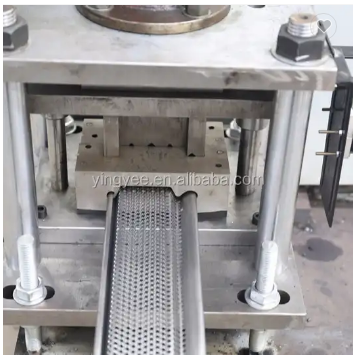
Exploring the Advantages of Steel Long Span Roof Roll Forming Machines
In the ever-evolving landscape of construction and architecture, the demand for sustainable and efficient building materials continues to rise. One such innovation that has gained considerable attention is the steel long span roof roll forming machine. This advanced equipment has revolutionized the process of roofing in various structures, offering numerous benefits that cater to both industrial and commercial needs.
What is a Steel Long Span Roof Roll Forming Machine?
A steel long span roof roll forming machine is a specialized piece of equipment designed to produce roofing sheets in long lengths from steel coils. This machinery operates through a continuous forming process where flat steel sheets are fed into a set of rollers, shaping them into desired profiles. The result is a robust, durable roofing solution that is ideal for large span structures, such as warehouses, factories, and commercial buildings.
Advantages of Using Steel Long Span Roof Roll Forming Machines
1. Enhanced Structural Integrity One of the primary benefits of utilizing steel for roofing is its superior strength-to-weight ratio. The long span capability of these roll forming machines allows for fewer rafters and supports, ensuring that large areas can be covered efficiently and effectively. This results in reduced material costs and less labor time during the construction phase.
2. Cost-Effectiveness While the initial investment in a steel long span roof roll forming machine may seem significant, the long-term savings far outweigh the costs. These machines enable manufacturers to produce roofing materials on-demand and with minimal waste. Additionally, the durability of steel roofing translates to lower maintenance costs over the lifespan of the roof.

3. Versatility and Customization Steel long span roof roll forming machines can be tailored to produce various roof profiles, including trapezoidal, corrugated, and standing seam designs. This versatility allows architects and builders to achieve aesthetic goals while ensuring functionality. The customization options extend to different coatings as well, offering enhanced protection against corrosion and weathering.
4. Speed and Efficiency In today's fast-paced construction environment, time is of the essence. Steel long span roof roll forming machines are designed for high-speed production without compromising quality. This means that construction projects can proceed more rapidly, meeting deadlines and reducing labor costs.
5. Environmental Benefits Steel is one of the most recycled materials globally, and its use in roofing contributes to sustainable building practices. The production process in roll forming machines generates minimal waste, and many machines are equipped for recycling scrap materials. Furthermore, steel roofing can enhance a building's energy efficiency by reflecting solar radiation, thereby reducing cooling costs.
6. Improved Weather Resistance Steel roofing is inherently resistant to severe weather conditions, including high winds, snow loads, and heavy rain. Roll-formed steel roofs offer superior durability, making them less likely to warp, crack, or become damaged over time, ensuring the safety and longevity of the structure they cover.
7. Ease of Installation Another significant advantage is that panels produced by steel long span roof roll forming machines are typically lighter than traditional roofing materials. This characteristic simplifies the installation process, allowing fewer workers to transport and set up the roofing panels, thus minimizing labor costs and time.
Conclusion
In summary, the steel long span roof roll forming machine is a vital innovation in the construction industry, providing an array of benefits from structural integrity to cost savings and environmental sustainability. As architects and builders continue to seek more efficient and effective building solutions, the role of these machines will undoubtedly grow. Ultimately, investing in steel long span roof roll forming technology not only enhances the quality of construction but also paves the way for a greener and more sustainable future in building design. Whether for industrial spaces or commercial establishments, the adoption of this versatile technology can lead to remarkable improvements in how we approach roofing projects across the globe.